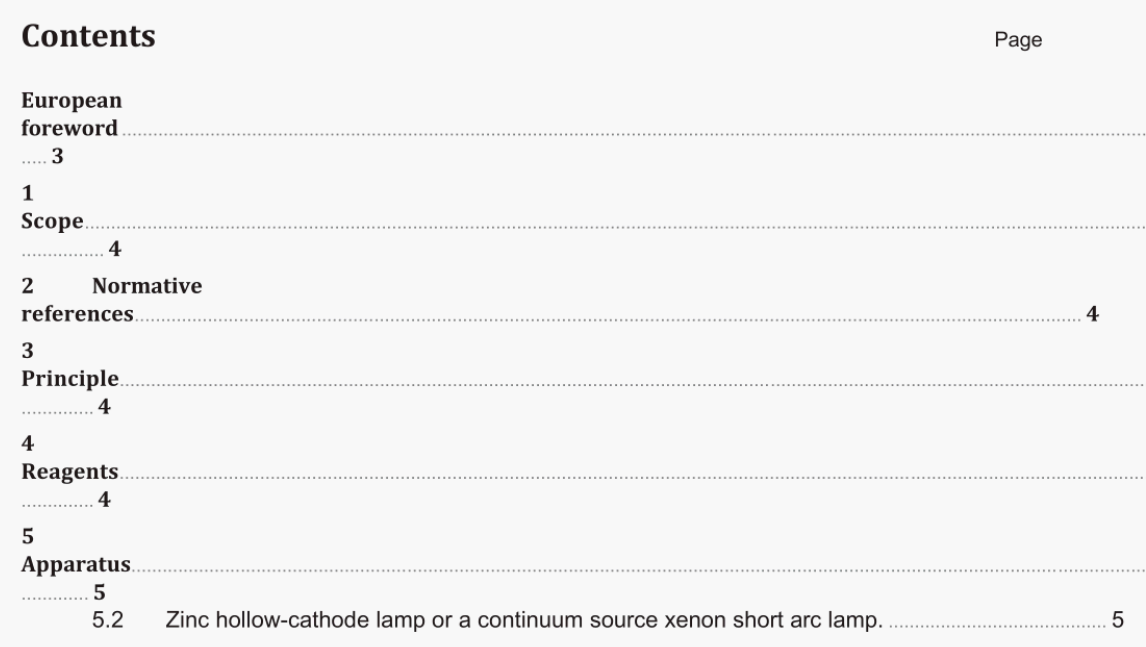BS EN 15024-2:2018 pdf download.Copper and copper alloys – Determination of zinc content
The presence of copper in the calibration solutions compensates for chemical interaction effects of copper in the test portion solution. Normally no similar additions are required to compensate for the effect of alloying elements. If an alloying element is present in the material to be analysed in mass fraction > 10 %,an appropriate mass of this element shall be added to the calibration solutions. The volumes of copper base solution added (4.8 or 4.9) have been calculated to compensate for chemical interaction effects of copper in test solutions of copper or high-copper alloys. Over-compensation may occur if the same volumes are added when the test samples are copper-based alloys where the percentage of copper is lower. In these cases, the volumes of copper base solution shall be decreased to match the copper content of the test sample in solution. The zinc concentration of the calibration solutions shall be adjusted to suit the sensitivity of the spectrometer used, so that the curve of absorbance as a function of concentration is a straight line.
7.4.2 Adjustment of the atomic absorption spectrometer
Fit the zinc hollow-cathode lamp (5.2) to the atomic absorption spectrometer (5.1), switch on the current and allow it to stabilize. If a continuum source instrument is used, switch on the current and allow it to stabilize. Adjust the wavelength in the region of 213,8 nm to minimum absorbance, if possible. Following manufacturer’s instructions, fit the correct burner, light the flame and allow the burner temperature to stabilize. Taking careful note of the manufacturer’s instructions regarding the minimum flow rate of acetylene, aspirate the calibration solution of highest concentration of analyte and adjust the burner configuration and gas flows to obtain maximum absorbance.
7.4.3 Spectrometric measurement of the calibration solutions
Aspirate the relevant series of calibration solutions (7.4.1.2, 7.4.1.3, 7.4.1.4 or 7.4.1.5) depending on the expected zinc content) in succession into the flame and measure the absorbance for each solution. Take care to keep the aspiration rate constant throughout the preparation of the calibration curve. Spray water through the burner after each measurement, see note. NOTE For certain types of spectrometer it is preferable to use a solution containing the attack reagents in the same concentrations as in the test portion solutions, instead of water.
7.4.4 Calibration curve
Establish the calibration curve using measured absorbances and corresponding analyte amounts. Use appropriate spectrometer software or an off-line computer for regression calculations or prepare a graphical representation.
BS EN 15024-2:2018 pdf download
